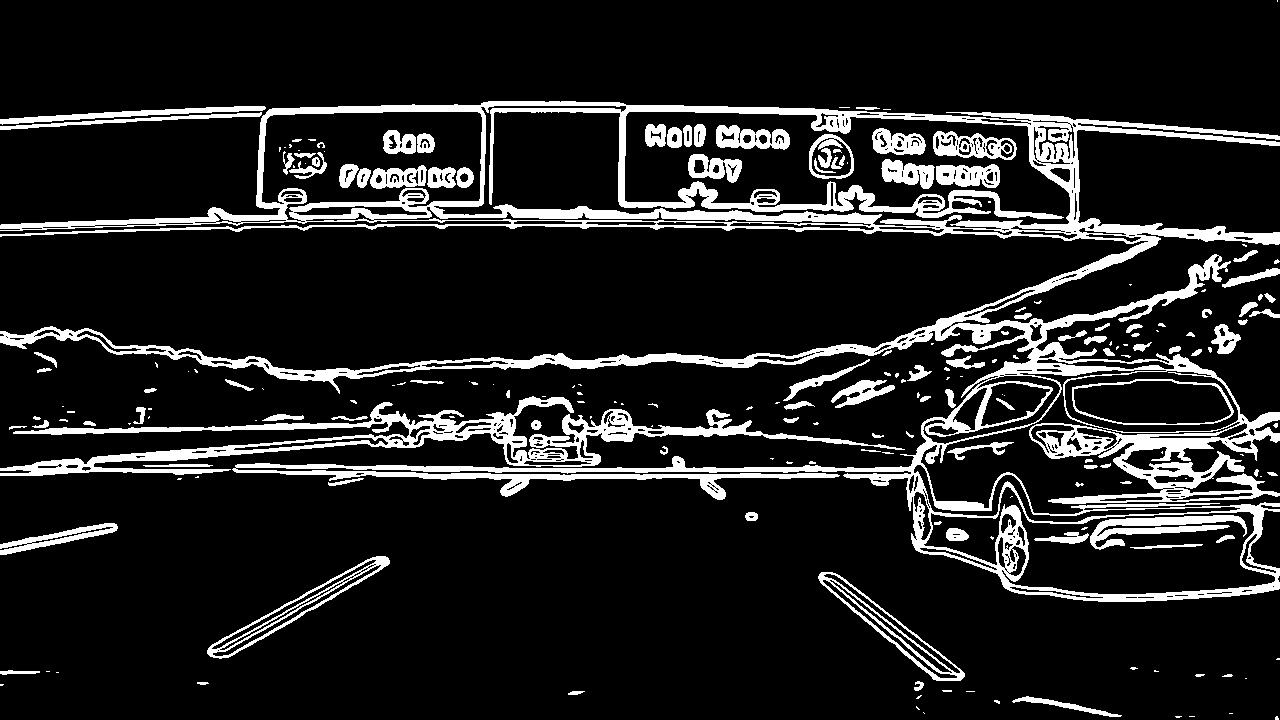04. Magnitude of the Gradient
Magnitude of the Gradient

With the result of the last quiz, you can now take the gradient in x or y and set thresholds to identify pixels within a certain gradient range. If you play around with the thresholds a bit, you'll find the x-gradient does a cleaner job of picking up the lane lines, but you can see the lines in the y-gradient as well.
In this next exercise, your goal is to apply a threshold to the overall magnitude of the gradient, in both x and y.
The magnitude, or absolute value, of the gradient is just the square root of the squares of the individual x and y gradients. For a gradient in both the x and y directions, the magnitude is the square root of the sum of the squares.
abs_sobelx = \sqrt{(sobel_x)^2}
abs_sobely = \sqrt{(sobel_y)^2}
abs_sobelxy = \sqrt{(sobel_x)^2+(sobel_y)^2}
It's also worth considering the size of the region in the image over which you'll be taking the gradient. You can modify the kernel size for the Sobel operator to change the size of this region. Taking the gradient over larger regions can smooth over noisy intensity fluctuations on small scales. The default Sobel kernel size is 3, but here you'll define a new function that takes kernel size as a parameter.
It's important to note here that the kernel size should be an odd number. Since we are searching for the gradient around a given pixel, we want to have an equal number of pixels in each direction of the region from this central pixel, leading to an odd-numbered filter size - a filter of size three has the central pixel with one additional pixel in each direction, while a filter of size five has an additional two pixels outward from the central pixel in each direction.
The function you'll define for the exercise below should take in an image and optional Sobel kernel size, as well as thresholds for gradient magnitude. Next, you'll compute the gradient magnitude, apply a threshold, and create a binary output image showing where thresholds were met.
Steps to take in this exercise:
-
Fill out the function in the editor below to return a thresholded gradient magnitude. Again, you can apply exclusive (
<, >) or inclusive (<=, >=) thresholds. -
Test that your function returns output similar to the example below for
sobel_kernel=9, mag_thresh=(30, 100).
You can download the image used in the quiz here .
Here's an example of the output you're going for:

Start Quiz: